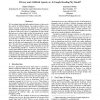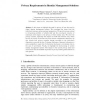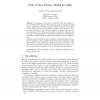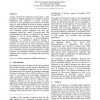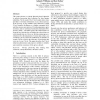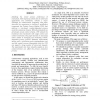IJCAI
2007
14 years 26 days ago
2007
We investigate legal and philosophical notions of privacy in the context of artificial agents. Our analysis utilizes a normative account of privacy that defends its value and the ...
ISSA
2008
14 years 26 days ago
2008
The principle of information security safeguards is a key information principle contained in every privacy legislation measure, framework, and guideline. This principle requires d...
HCI
2007
14 years 27 days ago
2007
In this paper we highlight the need for privacy of user data used in digital identity management systems. We investigate the issues from the individual, business, and government pe...
DBSEC
2008
14 years 27 days ago
2008
Abstract. We propose a new privacy model for XML data called Privacy for All (P4A) to capture collectors privacy practice and data providers privacy preferences. Through P4A data c...
CSREASAM
2008
14 years 27 days ago
2008
: Children's privacy has become critical with the increasing use of the Internet for commercial purposes and corresponding increase in requests for information. 65% of childre...
COMAD
2008
14 years 27 days ago
2008
Publishing a database instance containing individual information poses two kinds of privacy risk: presence leakage, by which the attackers can explicitly identify individuals in (...
BIOSIG
2007
14 years 27 days ago
2007
: 2D Face images are traditionally used in civil governmental applications. An extension from 2D to 3D images will lead to several advantages when setting up automated authenticati...
ACSW
2007
14 years 27 days ago
2007
To date, research has focussed on privacy from a wide perspective, enabling organisations to implement various technologies that contribute to privacy protection. However, in such...
ACSW
2007
14 years 27 days ago
2007
This paper presents a concept hierarchy-based approach to privacy preserving data collection for data mining called the P-level model. The P-level model allows data providers to d...
EUC
2008
Springer
14 years 1 months ago
2008
Springer
Satisfying the varied privacy preferences of individuals, while exposing context data to authorized applications and individuals, remains a major challenge for context-aware compu...
